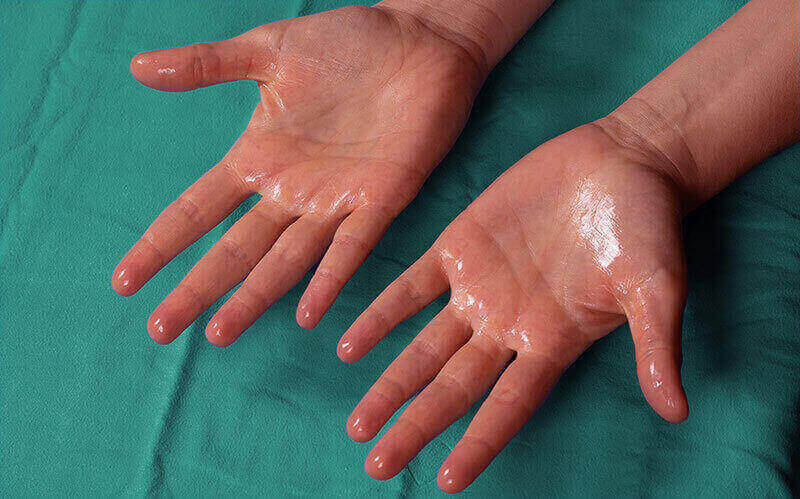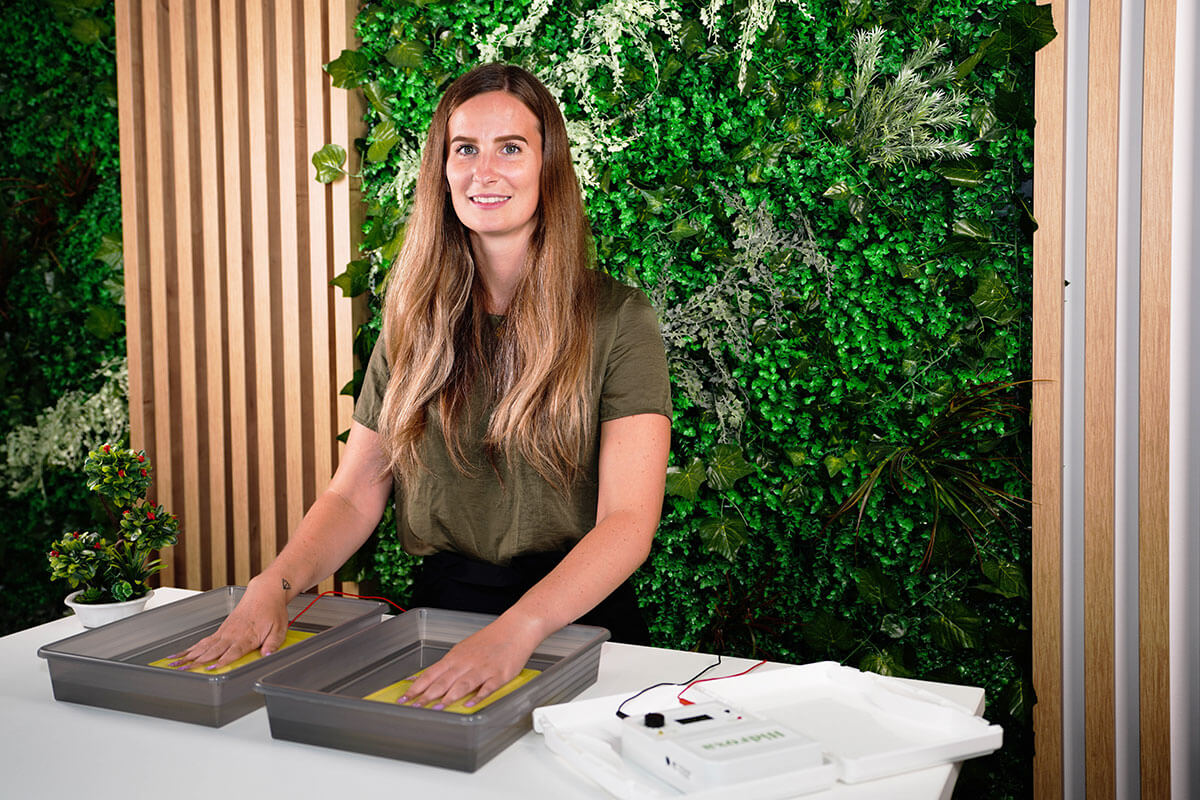Sweat Problems: Overcoming Hyperhidrosis and Reclaiming Your Confidence
Excessive sweating, often referred to as hyperhidrosis, is more than a minor annoyance; it's a significant issue that can deeply impact one's life, resulting in discomfort, social anxiety, and feelings of embarrassment. However, there are many effective ways to control sweating. If you're facing heavy sweating and looking for solutions, you're not alone. This article explores various solutions for managing sweat problems, focusing on medical treatments and practical advice suitable for individuals looking to alleviate their symptoms. It covers medical options and everyday tips to improve quality of life.
Understanding Hyperhidrosis
Before we look into how to treat it, let's understand what hyperhidrosis really means. Hyperhidrosis is when you sweat more than your body needs to cool down. It can happen in just one spot, like your underarms, hands, feet, or face, or it can be all over your body. Now, it's important to know there are two types of hyperhidrosis. The first kind is the medical condition in itself, without any underlying causes, called primary hyperhidrosis. The second kind, called secondary hyperhidrosis, happens because of other medical reasons or from taking certain medicines. For example, some antidepressants, painkillers, and medications for opioid use can make you sweat more. Health issues like diabetes, thyroid problems, going through menopause, infections, some types of cancer, and nerve disorders can also cause you to sweat excessively. That's why if you're sweating a lot more than usual, it's a good idea to talk to a doctor. They can help figure out why it's happening and the best way to deal with it. Together, you can find the right treatment plan that works for you, taking into account your specific situation.

How Hyperhidrosis is diagnosed?
Have you ever felt so embarrassed by excessive sweating – a potential sign of sweat problems like hyperhidrosis – that it made you hesitant to go out or shake hands? A healthcare provider can accurately diagnose the cause through a thorough evaluation, starting with a detailed review of your medical and family history to identify patterns of excessive perspiration. A physical exam, possibly including tests like the starch-iodine test to pinpoint sweat-prone areas and intensity, will follow. Further investigations, such as blood or urine tests, might be necessary to rule out other underlying health issues contributing to your sweat problems. A thermoregulatory sweat test could also be used to quantify your body's sweat production. With a clear diagnosis, your physician can craft a personalized treatment strategy, aiming to improve your condition and comfort.
Knowing when to seek medical help for excessive sweating
Consulting a healthcare professional is the crucial first step in addressing heavy sweating, also known as hyperhidrosis. This condition can be tricky to handle, but thankfully, there's a variety of solutions out there to help keep it under control. A chat with your doctor can lead to a correct diagnosis and open up a range of treatment options suited just for you. These might include simple changes in your daily routine, prescription medications, or even specific medical treatments.
While many people find relief with over-the-counter products or by tweaking their lifestyle, sometimes that's not enough. If you notice your excessive sweating is getting in the way of your everyday life, causing discomfort, or making you anxious in social situations, it's probably time to talk to your GP. Also, if you start sweating more all of a sudden without any clear reason, experience night sweats, or notice sweating along with fever, weight loss, or chest pain, you should get medical help right away. Your GP can work out why you're sweating too much and suggest the best ways to manage it, ensuring you get back to feeling comfortable and confident in your own skin.
A Step-by-Step Guide to Solving Your Sweat Problems

Step 1: Consult with a healthcare specialist
Why It’s Important: A healthcare professional can accurately diagnose the condition, differentiate between primary hyperhidrosis and secondary hyperhidrosis (which could be a symptom of another medical issue), and recommend an appropriate treatment plan.
How to proceed:
- Schedule an appointment: Begin with your primary care physician who can refer you to a dermatologist specializing in sweat disorders if necessary.
- Prepare for the visit: Document your sweating episodes, triggers, and any family history of sweating issues to provide comprehensive insights.
Step 2: Explore over-the-counter (OTC) solutions
Why It’s Important: Antiperspirants are the cornerstone of managing excessive sweating. Contrary to common belief, they're not just for underarms. Advanced formulations can be applied to hands, feet, and even the hairline. The key ingredient, Aluminum salts, works to temporarily block sweat ducts, reducing moisture.However, prescription-strength antiperspirants are available for more severe cases. Before turning to prescription options, consider the efficacy of OTC remedies.
Step 3: Start with Prescription-Strength Antiperspirants
Why It’s Important: Prescription antiperspirants contain higher levels of active ingredients like aluminum chloride, which can significantly reduce sweating. They can contain up to 20% Aluminium chloride.
- Obtain a Prescription: Based on your consultation, your healthcare provider may prescribe a high-strength antiperspirant.
- Follow Application Guidelines: Typically, you apply it to dry skin at night and wash it off in the morning, reducing irritation and maximizing effectiveness.
Step 4: Explore Medical Treatments
Why It’s Important: For those who don’t respond to antiperspirants, medical treatments offer alternative solutions.
Options Include:
- B. toxin injections: Temporarily block the nerves that stimulate your sweat glands. Plan for sessions every 3 to 12 months for sustained results.
- Iontophoresis: Uses electrical currents to temporarily shut down sweat glands. For sweaty hands, feet, and armpits, iontophoresis involves several sessions a week where your hands or feet are placed in water through which a mild electrical current is passed.
- Oral Medications: These medications work by affecting the autonomic nervous system, thereby reducing sweating. They offer an alternative treatment option for individuals who may not be suitable candidates for other therapies. They're effective but come with potential side effects like dry mouth, blurred vision, and more, making them a secondary option.
- MiraDry: This procedure utilizes microwave technology to permanently eliminate underarm sweat glands. Typically, 1 to 2 treatments are required to achieve long-lasting results, making it an appealing option for those seeking a permanent solution to excessive underarm sweating.
- Surgical Solutions: Reserved for the most severe cases, surgical options include removing sweat glands or performing endoscopic thoracic sympathectomy (ETS) to cut the nerves responsible for sweating. It's effective but can have significant side effects, such as severe compensatory sweating in other body areas etc.
- Qbrexza: FDA-approved for underarm sweating, it blocks Acetylcholine, reducing sweat. Non-invasive with fewer side effects. Wash hands after each use.
Community and Support Innovations
Online platforms and apps dedicated to hyperhidrosis support not only offer community and understanding but can also be a source of sharing innovative solutions and tips discovered by others with hyperhidrosis. These platforms can provide real-time support, advice, and encouragement.